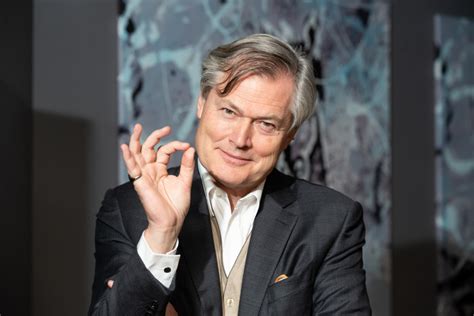This article was written by guest writer Gunter Pauli. Listen to the Transformers episode with Gunter here.
This article introduces a fresh approach to the design of fishing boats as one of the 100 innovations that shape “The Blue Economy”.
The Market
The UN Food and Agriculture Organisation (FAO) reported that 93.3 million tons of fish was landed from commercial fishing in wild fisheries valued at $150 billion, with a further 48.1 million tons produced by fish farms with an estimated market price of $110 billion in 2010. There are 4 million commercial fishing vessels, 1.3 million with a deck and enclosed areas. The rest are artisan fishing boats. Nearly 40,000 fishing vessels are greater than 100 tons representing the world’s factory fishing fleet. China is the world’s number one fish consumer, and has the world’s largest fishing industry, responsible for one third of the world’s catch. The second fish nation in the world is Peru, exporting nearly all fish caught. Indonesia is with 700,000 fishing boats the largest fleet, however 25 percent of all boats are canoes. Japan, USA, Chile, Indonesia, Russia, India, Thailand, Norway and Iceland account with China and Peru for more than half of the total amount caught.
The world’s largest factory ship processes 350 tons of fish each day with a capacity to store 7,000 tons of filleted catch. Since trawling is indiscriminate, all unwanted fish is increasingly processed into fishmeal for animal feed. Unfortunately, most factory vessels still throw unwanted fish overboard. According to the United Nations over 70 percent of the world’s fisheries are either fully exploited, over exploited or significantly depleted. As commercial fishing is fast ceasing to be viable, the only hope seems the expansion of fish farming. However, to produce one million tons of salmon requires the catching and processing of 3 million tons of wild fish.
Nippon Suisan Kaisha Ltd, known as Nissui is the world’s largest fishing company. The Japanese company owns about 20 percent of all quota and fishing rights of white fish in the world, and operates more than 150 fish factories with an annual turnover in excess of $5 billion. The Tokyo Metropolitan Central Wholesale Market known as Tsukiji Market is the biggest wholesale fish and seafood market. The market handles more than 400 types of seafood from seaweed to caviar, sardines, tuna and the highly controversial whale meat. Overall this market handles more than 700,000 tons of seafood with a total value of $5.5 billion employing 65,000 people.
The Innovation
The drive towards sustainable fisheries has forced the industry to adapt to dwindling fish stocks. Fishing companies are increasingly engaged in improving their catch systems with innovative nets and even radar or ultrasound as to avoid the unintended killings of dolphin
the exaggerated massacres of sharks, and the exhaustion of tuna stocks. Several market leaders are shifting from low value fish to high value marketing of specialized health food containing fish derived EPA and DPA, better known as Omega 3 unsaturated fatty acids, and the purification of fish originated raw materials as pharmaceutical ingredients to help reduce lipid levels in the blood and prevent arteriosclerosis. However, the main challenge remains – as described – that the shipping and fishing industry continues to consume heavy fuel as the main source of power and depletes fish reserves beyond the carrying capacity of the rivers and oceans. Fishing carries a heavy carbon and pollution footprint that is out of proportion to the size of its contribution to the economy. Eric Le Quéré has spent his early career in the design and the operation of fishing boats off the Atlantic Coast. He enjoys the seas and over the years experienced the increased demand and need to include sustainability in the business model. Realizing that the industry had not seen any innovations for the past half century, and faced with strict quota imposed by the European Union.
Eric started his own naval vessel building and maintenance company in Morocco in 2003. He quickly realized the need to rethink how the factory boats are conceived and operated. His exchanges with the local Moroccan authorities motivated him to embark on a major initiative in 2009 to design a fishing concept that generates better income while based on complete sustainability from fuel to processing. He decided to apply his insights first to small fishes like anchovy, sardines, and mackerel. He set a simple target: zero emissions and zero fossil fuel. He opted for a fishing catamaran capable of generating its own energy based on both solar and wind, two abundant sources at sea.
His catamaran has 4 rigid sails that can turn 360 degrees, equipped with 4 sets of solar panels.
The boat has 2 underwater generators, which generate additional hydropower from currents. The novel concept obtained in 2010 an international patent for this multimodal hybrid ship that can sail at 13 knots with 50 tons of processed fish on board. The hull of the ship is made out of 100 percent recycled aluminium. The netting vie solely sardines, and leave all other fishes free to roam in the ocean. Since Morocco did not have the know-how to pioneer such vessels, it was decided to establish the research and production centre in Caen, France. Eric was joined by Roger Vandomme and Bruno Racouchot to create a new company Marethix Industries SAS.
The First Cash Flow
The Government of Morocco ordered 6 ships. The construction of the boats builds on the available know-how in the Brittany and Normandy region of France securing the cooperation of 6 local companies. The financing of the boats is based on the exploitation rights of 60,000 tons of fish which have been allocated after successful bidding for a public tender. The catamaran enjoys low operational expenses, maximizes labor by processing all fish onboard, preparing the catch for value added consumer products including Omega 3. The whole initiative requires the recruiting of 45 persons per boat. The business model outcompetes all other boats thanks to its capacity to enhance the whole value chain from the vessel’s architecture, to the processing plant on sea, the catchment techniques, the logistics and the delivery methods. The fishing is traceable along the entire value chain. The catch is placed on standardized refrigerated containers on board, employing standard multimodal transport systems. The power for propulsion, vessel operation, refrigeration, aboard and onshore is 100 percent renewable. This systemic approach integrating multiple technologies into a highly performing cluster is one of the core characteristics of the Blue Economy.
The Opportunity
This integrated approach increases the value added of a basic fish catch by factor 2.5. This vessel capable of catching 10,000 tons of sardines saves 250,000 liters of heavy fuel per year. Each ton of heavy fuel oil burnt produces 3.1 tons of carbon dioxide. This implies that including all other components, each vessel generates one thousand tons of carbon credits annually which is the equivalent of one crew member’s salary in Morocco. In addition, in a region starved of drinking water, each boat saves 50,000 cubic meters (cub) of fresh water each year. Cutting costs while increasing value, without any compromise on sustainability secures a competitive position, not just for new construction of ships, also offering the authorities a package solution when allocating fishing quota through public tenders that includes job generation.
Marethix’ new business model includes the creation of a new industrial development in the vicinity of Agadir. In the case of Morocco, a processing center will produce ready to eat fish-based food. The dwindling fish reserves and the loss of jobs due to restrictions in quota are more than compensated with higher income while providing new life to the shipping construction industries in France. This provides a platform for local growth both in France and Morocco. Knowing that the small fish industry is increasing in popularity due to its markedly higher health benefits, and lower risks of heavy metal accumulation, this is one strategy to pursue an economy that offers better food at lower prices while generating more income for all involved, except those who stick to the past business models that risk completely depleting our oceans. It is a model that could inspire 4 million ship owners around the world. Who claimed that there is no future in fisheries? Following the model of Marethix, the fisheries could generate millions of jobs using available resources smartly. It is up to the entrepreneurs to make this happen.
Further information on the 100 innovations at www.theblueeconomy.org
* Gunter Pauli is an entrepreneur in business, culture, science, politics and the environment. Gunter’s development of The Blue Economy resulted in a book published in 2015 called “The Blue Economy 2.0: 200 projects implemented, 4 billion US Dollar invested and 3 million jobs created”. Gunter has published 20 books in more than 30 languages about science and fables for children. Over 17 million copies have been distributed worldwide. One of his fables “The Strongest Tree” is available in over 100 languages. Listen to the Transformers episode with Gunter here.


Amazing, indeed!
Yes, we must block destruction of nature. And invent more sustainable solutions. Yet, growth might still be a dead end?